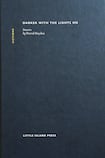
If I told you David Hayden’s short stories feature decapitations, cannibalism and sudden, unexplained immolations, you might reasonably surmise that he was peddling some kind of gothic horror. But his treatment of the macabre is so exquisitely weird and so unobtrusively deadpan as to defy easy categorisation. The severed head rolls away and sings a ditty (“One day I will be made whole”); the cannibalism occurs in a ludicrously genteel setting, with the sacrificial victim clothed in a tweed jacket (“His arms and hands were raised and rigid like a pugilist hare’s”) and dished up next to a plaque bearing his name, amid “the murmur of . . . chatter, chortles, giggles, bronchial coughing and, concealed in the admixture, several portions of social silence”; and as for the small troupe of dancers who have unaccountably caught fire, they “keep in step, bending and swooning, circling, circling, until, mostly naked and hairless, they fall as one, a stack of charred sticks,” whereupon the story proceeds without them.
Many of the tales gathered in Darker With the Lights On, which is Hayden's debut collection, resist straightforward interpretation. In Hay a hydraulic engineer is hired to fix a mine which has been flooded by the tears of the miners who work in it; they will not stop crying. The owners turn the situation to their advantage in ingenious fashion, planting zucchini, pak choi and peppers, and engaging the workers as "shift weepers" to irrigate the vegetables. Whatever its import, the scenario is marvellous in and of itself, and there is a melancholic poignancy in this strange vision of a large contingent of burly miners in a state of collective lachrymosity: "The rise, rise and fall, fall of men sobbing finds a shape, each shudder mounting on the others."
Art for art’s sake
In An Apple in a Library, a man scoffs an apple and then contrives, impossibly, to un-eat it: "a waxy, green ribbon peels out from the reader's mouth and spins around the fruit until it is complete". We are in the riotous realm of art for art's sake, where enjoyment in language and fancy takes precedence over plot and characterisation. There is a striking richness to Hayden's prose, a measured, dextrous eloquence animated by a quietly rhythmic cadence that wanders, from time to time, into a lyric timbre. One of his narrators, a father speaking from beyond the grave, tells of his yearning "to gather up my bones, to dispose of them in various poses; to dance, to fight, to feed, to fuck, to punish".
Hayden's storytelling is oblique and elliptical, conspicuously lacking in the rudiments of scene-setting
Some of the stories do, however, lend themselves to allegorical inference. In How to Read a Picture Book, a giant squirrel named Sorry delivers a monologue to a classroom of young children on the subject of writing, advising them on perspective, point of view and so on, in a manner redolent of creative writing manuals. His suggestion that "you can make scary things funny or silly or good. Or good things scary" would seem to be a nod to Hayden's method. Ditto his recollection of having been told off in drawing classes for leaving too much blank space in his pictures: à la Sorry the Squirrel, Hayden's storytelling is oblique and elliptical, conspicuously lacking in the rudiments of scene-setting. In a few instances the sense of obscurity is perhaps a little overcooked, but the majority of the tales in this 20-strong collection are taut and engaging.
We encounter another eccentric pedagogue in Play, in which an academic gives a talk on the developmental importance of play. (Hayden's description of the professor is characteristic in its droll, impassive repetition: "His glasses slid down the bridge of his nose. He pushed them up with his index finger. His glasses slid down the bridge of his nose.")
Here, again, it feels as though the author is winking at us. The lecturer’s declaration that: “Being in play pushes us to the edge of our skin” doubles as an affirmation of this volume’s restless energy and its dazzling, ludic virtuosity. One of his students, having observed that his lectures have a story-like quality, proposes to collate them as literature: “If the text behaves like a story I’ll submit it to a magazine.” Touché.











